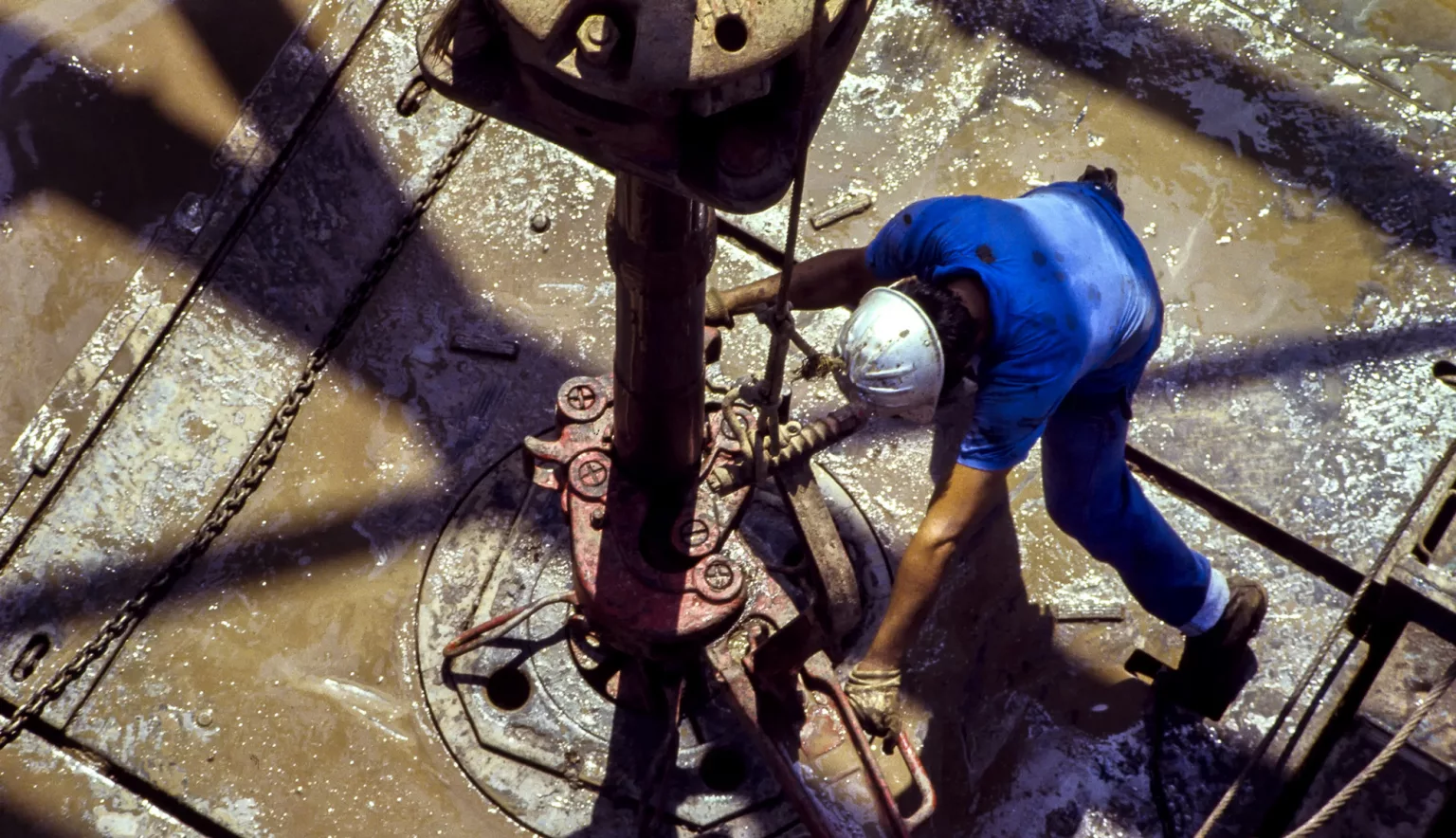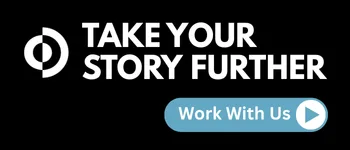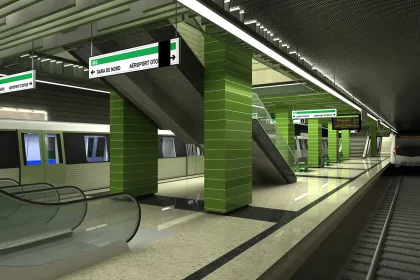HydraWell holds the key to fast, effective offshore oil well abandonment and it comes in the form of PWC. Tom Leeson, Chief Commercial Officer, reveals how.
THE ABANDONMENT ACCELERATOR
For me, pursuing a career in offshore oil was powered by the opportunities to travel.
“When I left university, I wanted to get away from 1980s Britain and see the world, and the sector enabled me to do so. I worked in the Netherlands and Oman, then returning to focus on the North Sea before shifting my attentions to the service sector where I hoped to become more involved with the commercial aspects of the industry.
“Working out in the field was a great introduction to this industry and it has never failed to surprise me with new challenges in the years since. There’s always something interesting to pursue.”
Both well versed and travelled, Tom Leeson has rightfully earned his reputation as an offshore decommissioning and well abandonment specialist.
Having started out as a Production Engineer working with Shell in 1989, an illustrious career has led him to hold a number of international management and consultancy roles. Now based in Aberdeen, the latest of these is his standing as the Chief Commercial Officer of HydraWell.
“HydraWell was brought to life just over 10 years ago now,” he explains, calling upon the company’s history as well as this career path. “A couple of the founders recognised that there was a real need being articulated by North Sea well operators, particularly in Norway.
“Offshore well owners were expressing concerns about the quality of the isolations in their abandonments – at that time there was a heavy reliance on simple yet ineffective solutions or section milling which was and still is problematic and expensive in its own right.”
Receiving support and sponsorship from said well owners, the company’s exploration of solutions quickly led to the invention and development of HydraWell’s patented perforation, wash and cement (PWC) technologies.
EFFICIENT AND EFFECTIVE
So, what is PWC?
Simply put, it offers an efficient alternative way of restoring a competent cement barrier behind well casing that is both much quicker and more effective in achieving long-term isolation than other abandonment methods. The method can either be used for plugging and abandoning wells and for conducting slot recovery or well repair operations for both single and dual casing wells.
Because such projects aren’t related to any income stream, they’re all about managing costs – and this is where PWC’s attractiveness lies.
“If we look at the two other principle options for getting an isolation barrier into the anulus behind the casing well, the first of these is cutting and pulling the casing out. The issue here, however, is that you’ve then got to deal with debris and lifting the casing to surface, and it might be corroded or contaminated with radioactive material,” explains Leeson.
“The second option is section milling, but the issue here lies in swarf, where a typical job might produce roughly four tonnes of these tiny shavings of metal. It’s horrible stuff to handle, can get into and damage equipment at the surface and often requires major clean-up operations. But it has to be disposed of.”
Operating by perforating the casing, washing the annulus behind it, and placing cement across the whole cross-section of the wellbore in a single run, PWC eliminates these challenges.
In one instance, for example, HydraWell was able to reduce one of its clients plug and abandonment (P&A) processes from 20 days to just three using PWC, drastically reducing the cost and time taken.
“We lead this segment in the market right now,” adds Leeson, explaining how the company has patented its intellectual property.
“We use these technologies in tandem with other industry services, integrating them with elements of abandonment such as cementing. This is where the real successes lie – when we’re able to plan and execute an entire project through close knit collaboration to ensure that costs are minimised.”
BROADENING HORIZONS
To date, the company has delivered almost 300 annulus cement plugs with a 97 percent success rate, largely in the North Sea.
In the last 18 months, however, the company has begun to look further afield, identifying prospective potential business in alternate regions and indeed recognising the technology’s mutual benefit to other global businesses. As PWC has become the favoured plugging method for a number of supermajors, majors and independent oil companies operating in the North Sea, the same companies bring the technology with them to other parts of the world.
“We’ve found that Southeast Asia is an emerging market for us,” reveals the CCO. “We’ve recently delivered on some work in Brunei and Malaysia as a result, the latter having been an undertaking with Petronas.
“This was our first project in the country and has been a major step for the business. Petronas operate somewhat differently from European companies, so it was much more than just another P&A. Rather, it was a learning curve in understanding the cultural, procedural and workflow differences, learnings we can take with us moving forward.”
Alongside this subregion, the firm has identified Canada, Brazil and Australia as potentially high value markets of the future, each meeting a specific criterion.
Commenting on expansion potential, Leeson continues: “As you’d expect, we’re looking to establish ourselves in mature basins where there is a large stock of aging wells that will require abandonment. This has to be coupled with the right regulatory regime, however, where governments and industries alike are encouraged to ensure that isolations are both successful and long-lasting, keeping in mind corporate responsibility and the environment.”
OPTIMISM AND OPPORTUNITY
Moving forward, the aforementioned expansion strategy remains top of the pecking order for HydraWell, particularly as the North Sea market has begun to plateau.
Growth is not the sole ambition in the company’s pipeline, however, with innovation and diversification also remaining a continual process.
“In terms of investment, we’re currently looking at how we can modify our existing skillsets and capital to work without a rig on site,” Leeson affirms. “Not only would this allow us to bring next generation tooling to market, but in turn we’ll be able to provide even more competitive services.
“If the client can dispense with the rig, then we can probably halve the cost of the well abandonment, for example.”
Coupled with both innovation and expansion will be consolidation for the company, with HydraWell looking to take its industry-leading technology, experienced team and proven abilities in order to institutionalise and formalise PWC as a globally established process.
“We’re optimistic about growth opportunities,” Leeson responds when asked about the firm’s outlook.
“Of course, we’re realistic that there are macro challenges that we don’t have control over. If we end up at $30 per barrel then well owners won’t be spending on abandonment, and similarly if we reach £150 per barrel then sources will continue producing for longer.
“Aside from this, however, we’re expecting a rise in demand for sophisticated abandonments due to regulatory and environmental pressures, particularly surrounding complex P&A projects – a trend that will serve us well for years to come.”
































